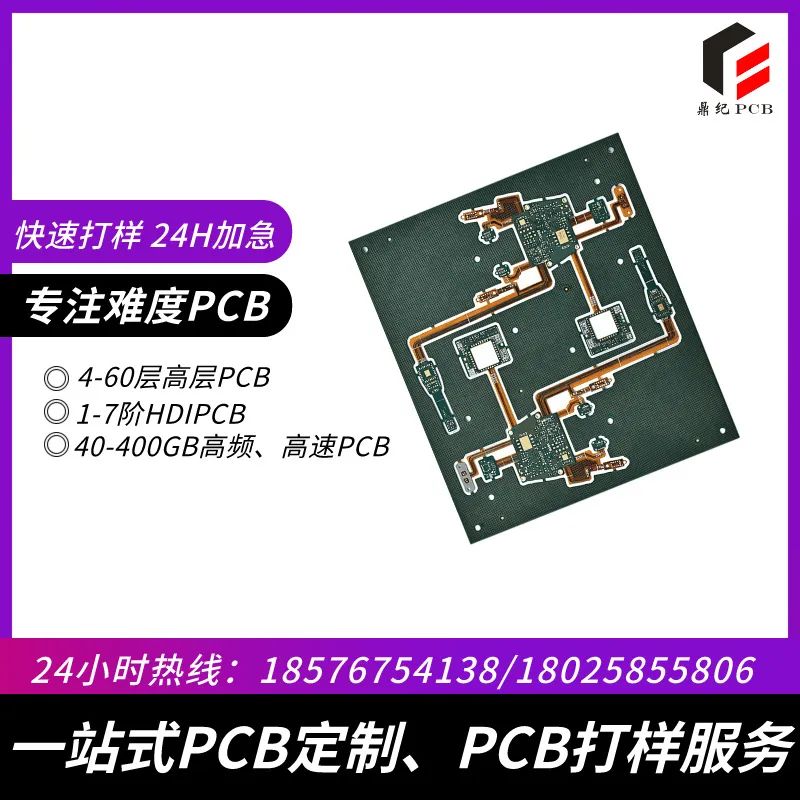RF (Radio Frequency) and Mixed Signal PCB Layout Guidelines
RF (Radio Frequency) and Mixed Signal (Analog & Digital Mixed Signals) PCB design requires special attention to issues such as signal integrity, noise control, and electromagnetic interference (EMI). Their layout differs from ordinary digital PCB design because they involve high-speed signals, the coexistence of sensitive analog circuits and digital circuits, and higher requirements for PCB electrical performance.

Here are the general guidelines for RF and mixed signal PCB layout design:
1. RF PCB Layout Design Guidelines
1.1 Separating Analog and Digital Signals
·Separate Layout for Analog and Digital Signals: To avoid interference from digital signals on analog signals, RF design typically requires physically separating analog and digital circuits. Digital signals can introduce significant noise that affects the performance of RF circuits.
·Ground Plane Separation: It is best to design separate ground planes for the analog and digital sections. The analog ground plane usually needs to connect to the digital ground plane through dedicated ground vias to reduce mutual interference.
1.2 Prioritize Layout of High-Frequency Signals
·Short Paths: RF signal lines should be as short as possible to avoid long signal paths, reducing signal loss and interference.
·Transmission Line Design: RF signal transmission lines need to have correct impedance matching. Common types of transmission lines include microstrip, stripline, and coplanar waveguide. Ensure that the width, spacing, and material characteristics of the transmission line meet specific impedance requirements (such as 50Ω or 75Ω).
·Impedance Matching: Ensure that the impedance of the RF signal line matches the source and load impedance to avoid reflections and signal loss.
1.3 Effectively Manage Power and Ground
·Power Decoupling: RF circuits require a regulated power supply and must use appropriate decoupling capacitors to reduce noise and power ripple. Power decoupling capacitors should be placed close to the power pins to avoid noise propagation to other parts.
·Ground Plane Continuity: RF signals and power should have good ground plane support to avoid ground loop noise. Avoid having holes in the ground plane of the RF section to minimize unnecessary paths.
·Via Optimization: Avoid having RF signals pass through vias or ensure that the layout and number of vias are minimized. Vias can introduce additional parasitic inductance and resistance, affecting high-frequency signal transmission.
1.4 Suppress EMI
·Shielding Design: RF circuits are susceptible to external electromagnetic interference, so consider using shielding boxes or placing critical circuits within shielding layers.
·Cable Grounding and Shielding: Appropriate shielding measures should be taken at the ports connecting RF signals to prevent signal leakage or external interference.
2. Mixed Signal PCB Layout Design Guidelines
2.1 Separation of Analog and Digital Signals
·Physical Isolation: In mixed signal design, the analog and digital sections should be physically isolated to avoid noise from digital circuits affecting analog circuits.
·Layout of Analog Section: The analog circuit should be placed at one end of the PCB, while the digital circuit should be placed at the other end to maintain good isolation.
2.2 Reduce Noise Impact on Analog Circuits
·Separate Power Supplies for Digital and Analog: The power supply for the digital circuit and the power supply for the analog circuit should be separated, avoiding sharing the same power rail as much as possible. This can reduce noise caused by digital circuits.
·Isolated Power Decoupling Capacitors: Analog and digital circuits should each have their own decoupling capacitors, and these capacitors should be placed as close to the components as possible to enhance decoupling effectiveness.
·Ground Plane Management: The analog ground plane and digital ground plane need to be connected through ground vias, but the integrity of the analog ground section must be maintained. The “ground plane via bridging” method can be used to avoid direct interference between the digital ground and analog ground.
2.3 Power Noise Suppression
·Low Noise Power Design: Use low-noise voltage regulators and decoupling capacitors to ensure a clean power supply for the analog circuit.
·Power Distribution: Ensure that power distribution is reasonable during design, with separate supplies for analog and digital power to reduce mutual interference.
2.4 Shortest Signal Path
·Shortest Path: When laying out, keep the path of analog signals as short and direct as possible to avoid cross-interference and signal attenuation.
·Prioritize Routing: Analog signal lines should be prioritized in the layout, avoiding digital signal lines next to analog signal lines to reduce crosstalk from digital signals.
2.5 Avoid Crosstalk from Digital Signals
·Proper Routing: Avoid routing analog and digital signals on the same layer, especially in high-speed signal transmission lines. Use different layers to layout analog signals and digital signals as much as possible.
·Signal Shielding: For high-frequency digital signals, consider adding a shielding layer to prevent interference with sensitive analog signals.
2.6 Good Decoupling Design
·Decoupling Capacitor Layout: Place decoupling capacitors between analog and digital circuits, especially between analog and digital power supplies, using filters (such as LC filters) to reduce interference between power supplies.
3. Layout Optimization Summary
3.1 Key Points of RF Section Design
·Keep high-frequency signal paths as short as possible to avoid signal reflections and losses.
·Ensure impedance matching to avoid signal reflections.
·Add shielding around RF signal lines to reduce electromagnetic interference.
·Ensure continuity of the ground plane to avoid segmentation.
3.2 Key Points of Mixed Signal Design
·Physically isolate analog circuits from digital circuits to minimize cross-interference.
·Isolate power supplies to prevent analog signals from being affected by digital power noise.
·Design effective decoupling networks to ensure stable power supply.
3.3 Comprehensive Considerations
·Power, ground plane, and signal path designs for high-frequency and mixed signal sections need to be comprehensively optimized to ensure signal integrity and power stability.
·Strictly control signal paths, component layouts, and power distribution to avoid noise and interference issues.
Conclusion
The core challenge of RF and mixed signal PCB design is how to effectively manage interference between high-frequency signals and analog signals with digital signals. By separating analog and digital circuits, optimizing ground planes and power layouts, and implementing effective noise suppression measures, performance and reliability of the design can be ensured. We hope these design guidelines will help you achieve better results in RF and mixed signal circuit PCB design. If you have specific design questions, feel free to consult further!
